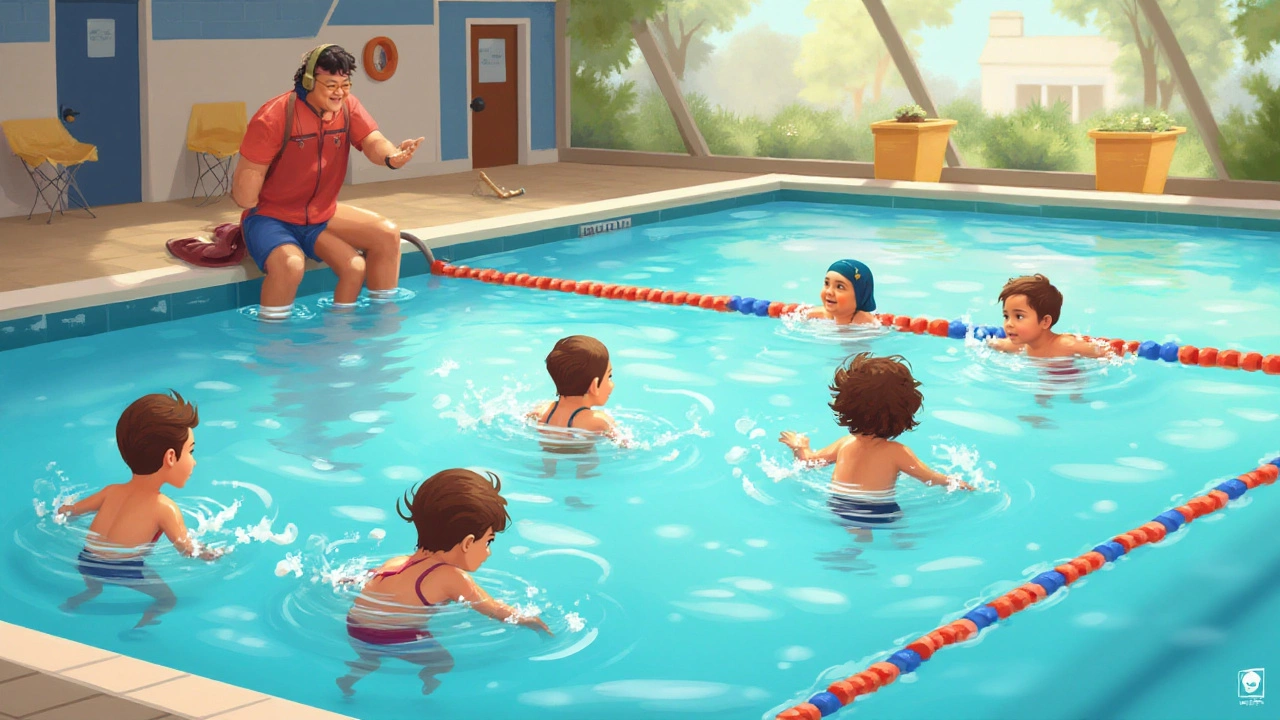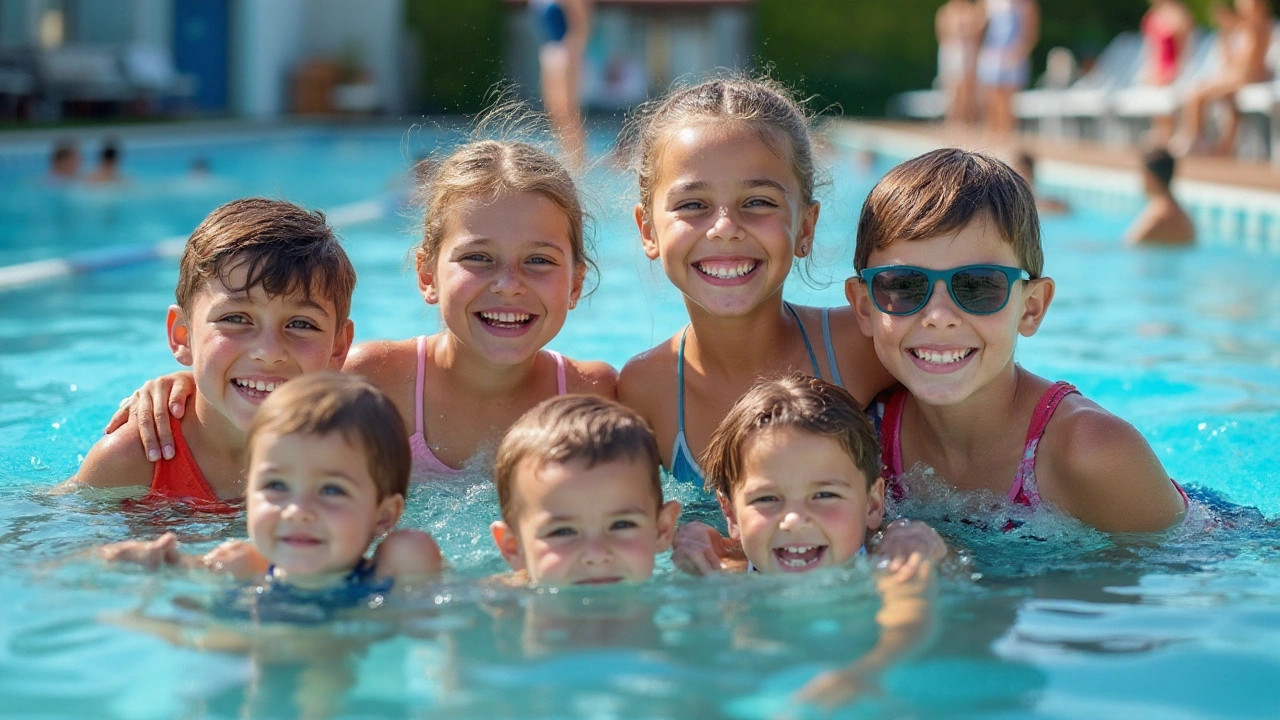Best Swimming Techniques for Beginners: Choosing Your First Style
 Nov, 22 2024
Nov, 22 2024
Learning to swim opens up a world of fun and freedom in water, but choosing the right style to start with can make all the difference. Each swimming stroke offers unique benefits and challenges, catering to different levels of experience and personal preferences. When beginning your aquatic adventure, it's essential to find a style that not only matches your goals but also ignites your excitement in the water.
In this article, we'll navigate through various swimming techniques, examining their individual traits and uncovering what makes each one special for new swimmers. Whether you're attracted to the ease of floating in the backstroke or aim to master the speed of freestyle, knowing where to begin is the first step in your swimming journey. Let's explore these styles to help you decide which one should kickstart your swimming lessons.
- Understanding Different Styles
- Benefits of Popular Techniques
- Challenges to Consider
- Tips for New Learnings
Understanding Different Styles
Diving into the aquatic world means getting acquainted with the various swimming styles that each offer unique experiences and benefits. For beginners, it might feel like stepping into a realm of endless choices. Each stroke is like a distinct dance, with its rhythm and flow, tailored for different types of swimmers. The journey begins with understanding these diverse techniques, which can lay the groundwork for your comfort and proficiency in water.
The first stroke that often catches the attention of new learners is the ever-popular freestyle. Known for its straightforward and efficient technique, the freestyle is both a favorite in competitive swimming and a go-to for leisurely laps. The freestyle involves rhythmic breathing and arm movements with a flutter kick, making it an excellent choice for building endurance. New swimmers appreciate its efficiency, enabling them to cover significant distances without exhausting their energy. As you glide through the water, the freestyle might feel like a natural extension of your body's movement, calling to mind the words of Olympic swimmer Michael Phelps, "Once you get past the pain threshold, swimming becomes exhilarating."
Next up, there's the backstroke, a style that flips the scene as swimmers float on their backs. This stroke provides the luxury of breathing without the challenge of keeping one's face submerged, making it an attractive choice for those easing into aquatic activities. The key lies in synchronized arm moves and a flutter kick, similar to the freestyle, but with the head resting comfortably on the surface. Interesting fact: Backstrokes offer a perfect vantage to enjoy the sky or count ceiling tiles indoor pools, cracking a myth that swimming is only about training. It's excellent for posture because it demands a straight back and shoulders, bringing healthy habits that extend beyond the pool.
Equally important is the breaststroke, often dubbed the swimmer's version of walking due to its leisurely pace. This swimming style emphasizes endurance over speed, using a frog-like kick and a simultaneous arm movement that pushes water back. Even though it might look simple, mastering the timing and coordination of the breaststroke can be quite challenging. It provides a full-body workout, engaging muscles from head to toe while teaching patience and rhythm. During the French Revolution, this stroke earned its name from soldiers who crossed rivers using this technique, proving its timeless appeal.
A rather elaborate yet rewarding style is the butterfly. This stroke requires both strength and grace, characterized by a dolphin kick and a simultaneous arm movement. It is arguably the most challenging stroke to master due to its high demand for coordination and strength, but it rewards with remarkable speed and power. Beginners eyeing this technique often do so with aspirations towards competitive swimming or personal challenges. A recent study published in the Journal of Swimming Research highlighted that the butterfly stroke burns up to 750 calories per hour, making it an extraordinary workout for fitness enthusiasts. There's a certain beauty in overcoming its challenges, much akin to taming a wild force of nature through skill and precision.

Benefits of Popular Techniques
Exploring the benefits of different swimming techniques can help beginners discover which style aligns best with their personal objectives and comfort levels in water. Each stroke carries distinct advantages, from physical and mental health boosts to enhancing one's affinity with aquatic environments. Let's take a closer look at some of the popular methods: freestyle, backstroke, breaststroke, and butterfly, and what makes them appealing to new swimmers.
The freestyle stroke, often referred to as the front crawl, is known for its efficiency and speed, making it a favored choice among competitive swimmers. Freestyle is ideal for beginners because it provides a comprehensive workout, engaging all major muscle groups while promoting cardiovascular endurance. By mastering this technique, swimmers not only improve their stamina but also gain a sense of rhythm and pace crucial for swimming over longer distances. A quote from Swim England states,
"Freestyle's rhythmic breathing pattern makes it one of the most versatile and beneficial strokes, perfect for those aiming to build their aquatic confidence."Apart from physical benefits, learning freestyle can boost mental health by reducing stress and anxiety through smooth, controlled movements.
The backstroke offers swimmers a unique experience of facing the sky, giving them a fresh perspective while remaining buoyant. Beginners often appreciate backstroke due to the ease of breathing with the head above water, which significantly reduces the anxiety of needing to gasp for air. It strengthens the back and shoulder muscles, promoting good posture and spinal alignment, which is essential for anyone spending considerable time sitting. Since backstroke doesn’t require the precision of a facedown exhalation, it can make swimming a more relaxing endeavor for those new to the water, providing a restorative break between more intense strokes.
When it comes to the breaststroke, it's often highlighted for being methodical and less physically demanding than other styles. It's therefore an appealing option for beginners focusing on mastering technique and coordination before speed. The simultaneous movements of the arms and legs enhance muscular symmetry and joint flexibility. This stroke is also recognized for its energy efficiency, allowing swimmers to maintain momentum with minimal effort, which can be encouraging for those not yet confident with their swimming stamina. Practice of the breaststroke can significantly improve one’s lung capacity and provide a thorough full-body workout.
For swimmers seeking a challenge, the butterfly stroke emerges as a test of strength and coordination. Though more demanding, the benefits it confers are unparalleled, especially in building upper body strength and improving cardiovascular performance. Performing butterfly requires exquisite control over breath, timing, and movement synergy, leading to improved muscle tone and endurance. Despite its complexity, mastering the butterfly stroke can be exhilarating, bringing a sense of achievement and boosting overall swimming prowess.
Understanding these benefits can help guide beginners toward the style that resonates best with their preferences and learning goals. By embracing a stroke that aligns with their natural inclinations, they can transform their swimming journey into a rewarding and enjoyable pursuit.

Challenges to Consider
Diving into the world of swimming presents exhilarating opportunities, yet it brings along specific challenges that beginners should not overlook. Recognizing these potential hurdles can transform early lessons into smoother experiences. One of the foremost challenges is developing timing and coordination, especially when dealing with strokes like the freestyle, which demands a harmonious blend of arm pulls, breathing, and kicking. Beginners often find themselves gasping for air as they adjust to the rhythm that each stroke requires. It's important to understand that patience and practice play a crucial role here, as getting each element to click simultaneously requires time and perseverance.
Another significant challenge is overcoming fear of water, which is quite common among first-time swimmers. The vast depths can appear intimidating. For someone stepping into a pool for the first time, the feeling of unease is understandable. In such scenarios, instilling confidence gradually becomes essential. Instructors often suggest starting in the shallow end, allowing swimmers to become accustomed to the sensation of water enveloping and buoying them. A focus on gradual immersion and positive experiences can help alleviate such fears over time, turning trepidation into trust, one inch at a time. According to a report by the National Water Safety Congress, engaging with the water gradually is often the most effective way to build comfort and safety awareness.
Breathing techniques pose another set of challenges that many beginners face. With every stroke, ensuring an adequate intake of air without disrupting the flow is vital. It's not just about taking a breath but learning to synchronize breathing with strokes. This synchronization can be elusive at first, leaving new swimmers struggling and potentially losing pace with strokes. Breathing exercises exclusive to swimming often assist novices in maintaining their rhythm without becoming breathless. It’s noteworthy that techniques like bilateral breathing can aid in developing a balanced stroke, yet demand extra effort in practice. Consistent training under the guidance of a proficient coach can address these breathing blues efficiently.
When considering beginner swimming styles, varying buoyancy and body positions can also pose challenges. Adjusting to a horizontal position and floating may come naturally to some, while others feel like they're sinking. Understanding one's buoyancy level, dictated by body type and composition, requires acclimatization. It's often a revelation for many who expect to float effortlessly, realizing instead that their core strength and positioning greatly influence their experience. In this context, practicing floating exercises and controlled movements becomes integral to gain familiarity with how their body interacts with water. Enjoying some exercises in private and quiet waters is beneficial at the start to avoid distractions and facilitate focus.
Building endurance is also a critical challenge when approaching new swimming techniques. Unlike on land, swimming calls for maintaining energy and stamina through the resistance water offers. Even seasoned athletes find themselves catching their breath quicker in the pool than during a run. Beginners should anticipate their muscles demanding extra oxygen and hence engage in regular practice sessions to enhance their stamina. Endurance doesn't build overnight, so incremental increases in swim duration, and focusing on technique rather than speed, can prevent fatigue and boost swimming longevity.
"Swimming is unique in that it engages almost every muscle group simultaneously and in a way entirely different from on-land movements. Building the right posture and rhythm is key," said Michael Phelps, the most decorated swimmer in Olympic history.
Keeping these challenges in mind, beginners can approach their swimming journey with realistic expectations and a steadfast commitment to practice. Understanding and navigating these hurdles not only helps in mastering a chosen style but also lays a significant foundation for a lifetime of aquatic enjoyment. Embracing the journey with patience leads to not just mastering a skill but enjoying the water in all its refreshing glory.

Tips for New Learnings
Embarking on the journey to master a new swimming style is an exciting challenge for beginners. To ensure success, it is crucial to approach this learning process with the right mindset and strategies. First and foremost, patience is a virtue in the water. Remember that everyone learns at their own pace, so it's important to set realistic goals and progress step by step. Each small improvement is a milestone worth celebrating. Start with short practice sessions that focus on honing your technique rather than exhausting yourself. This creates a positive association with swimming and prevents burnout.
Investing in quality lessons can significantly accelerate your progress. Professional instructors provide tailored guidance and help correct forms that may not be immediately noticeable to an untrained eye. They can introduce you to various training drills and exercises, enhancing your muscle memory and boosting your confidence in the water. However, practicing on your own between lessons is just as important. Consistency is key to developing proficiency in any swimming technique. Incorporating regular swimming sessions into your weekly routine will solidify your skills and build stamina over time.
"Swimming is not about perfection, but persistence," says renowned swim coach Tim Mervyn. His approach emphasizes regular practice and maintaining a positive mindset regardless of setbacks. Taking his advice means embracing each opportunity to learn, whether from mistakes or successes.
Utilizing tools and accessories can also be worthwhile for new swimmers. Equipment such as kickboards, swim fins, or pull buoys can enhance your training regimen. These tools aid in focusing more on particular aspects of your stroke, improving your form, and building strength efficiently. Never underestimate the power of visual learning, either. Watching and analyzing videos of professional swimmers can provide insights into technique and body positioning, which are often easier to replicate when seen rather than read about.
Joining a community or a swim group is another excellent way to stay motivated and engaged. Sharing experiences and tips with fellow learners not only creates a network of support but also introduces you to a variety of perspectives and methods in learning to swim. Group environments foster encouragement and camaraderie, turning solitary practice into a social and, often, more enjoyable activity.
Finally, remember to listen to your body. Swimming is a physically demanding activity, and overexertion can lead to fatigue or even injury. Ensure you're giving yourself adequate rest, hydrating well, and maintaining a balanced diet to support your energy needs. As you progress, keep these tips in mind to enjoy a safe, successful, and rewarding journey towards mastering your chosen swimming style.